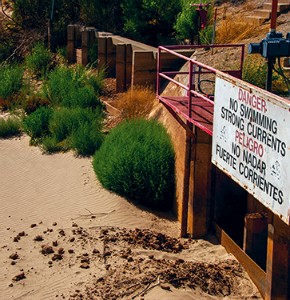Watershed disciples: Studying the local landscape

The drought in the American West is harrowing. In California, where almost half the fruits, vegetables, and nuts for the United States are grown, the drought is labeled D4—“exceptional,” the highest category—by the U.S. Drought Monitor. Though summer rains brought a reprieve to portions of New Mexico and Texas, much of the region saw the drought intensify throughout the summer.
Cycles of drought have long been part of the southwestern landscape, but the current drought trends are exacerbated by a generally warming climate. The vast majority of scientists agree that global trends of climate change are human-caused, largely due to the burning of fossil fuels. It’s predicted that if the current pattern continues, the Southwest will see hotter, drier summers, deepening drought, and more severe wildfires. Predictions for other regions around the world are equally sobering. Yet convincing Americans to change their use of fossil fuels has proven to be exceptionally difficult.
At the Bartimaeus Institute in Oak View, California, Ched Myers and Elaine Enns have been working to change the way that American Christians think and act on issues related to climate change. They call their approach “watershed discipleship.” It focuses congregations’ attention on their own neighborhood and landscape. By working at a profoundly local level, Myers and Enns hope to build a Christian environmental movement that is both deep and wide.




